
(Photo: Hospitali-tea: Franci Neely enjoying Sudanese coffee with ginger, black pepper, and cardamon with a new friend in Karima, Sudan)
Whether Franci Neely is selecting fabric for a one-of-a-kind handmade dress in the lively Marché Central marketplace in Yaoundé, Cameroon, or dining on baba ghanoush, vegetable soup, beef kebabs, and creme caramel at the Nubian Rest House in Karima, Sudan, this accomplished world traveler is sharing smiles and collecting thousands of miles of memories along the way - and she's excited to share some of the highlights from her journey's journal.
Neely has a fierce fondness for Africa's many cultural offerings. She's had enchanting exchanges with iconic groups of locals such as the flamboyant fashionistas in the Congo known as sapeurs, whose unique, dapper style involves donning well-tailored suits and bright designer threads.
She's had the privilege of coming eye to eye with the Mundari tribal people of South Sudan in their famed cattle camp and shared a whimsical song-and-dance session with the Pygmy people of Central Africa. Neely says the Pygmy people were welcoming and eager to share some of their traditions such as their hunting and gathering skills. Here is a glimpse into some of Franci Neely's African excursions.
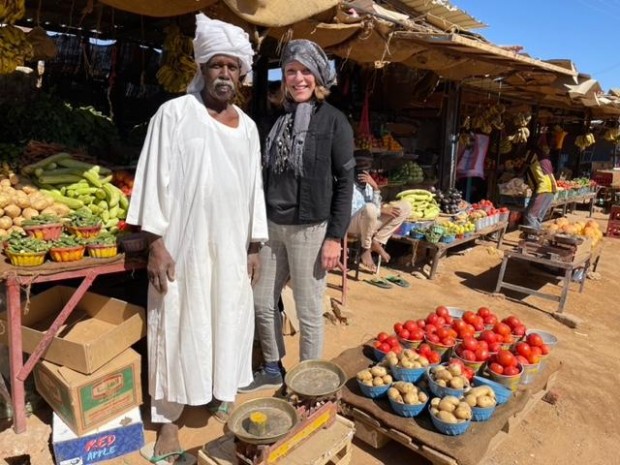
"I visited the Karima marketplace in northern Sudan on Feb. 11, 2022. It was Friday and people were at Friday prayers, so [it was] not as bustling as usual. Nonetheless, I encountered beautiful people in front of fruit and veggie stands where veggies were decoratively displayed. At this marketplace, I bought okra for the chef at the Nubian Rest House to prepare. In Karima we stopped at a tea stall for a Sudanese coffee with ginger. [The] smiles in the pictures show it all," Franci Neely says.

Feb. 12, 2022
"I visited Temple of Soleb in northern Sudan, [which is] a UNESCO World Heritage site built under the reign of Amenhotep III and rededicated under his successor, Akhenaten," Franci Neely recalls. "This was an ancient Nubian town north of the third cataract of the Nile and [was] discovered in 1844. It has a vast necropolis with small tomb chapels decorated with pyramids. In the ruins, I saw two rooms adorned with bas-reliefs showing captives with their hands tied behind their backs, one with Nubian captives and the other with Asiatic captives."
Feb. 14-16, 2022
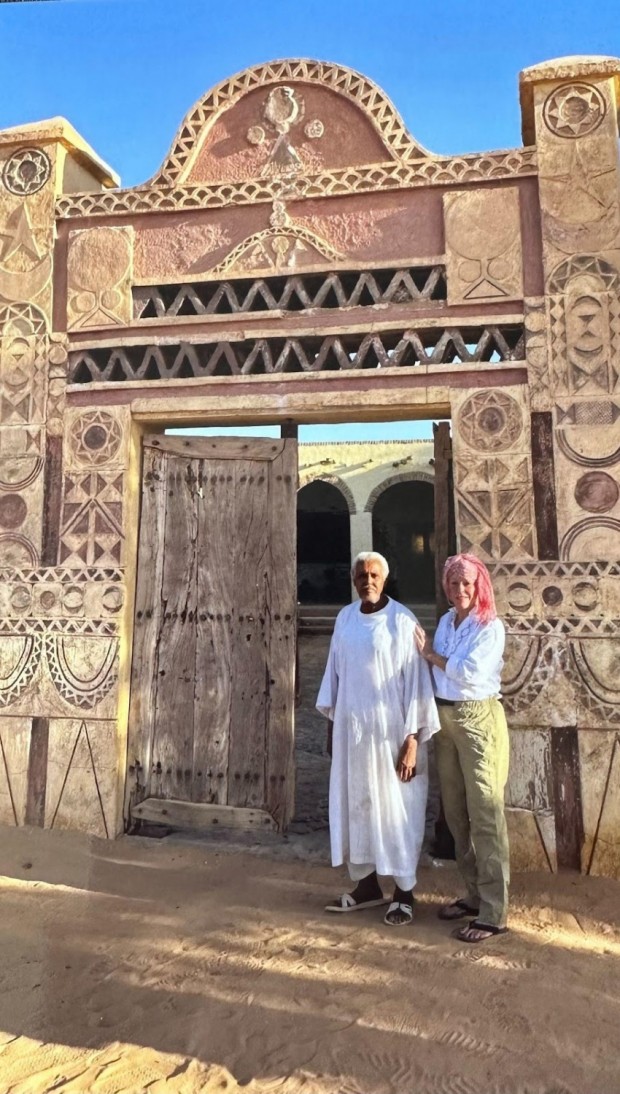
The Nubian Rest House: "This was truly an oasis of loveliness right by the revered [mountain] Jebel Barkal. I climbed Jebel Barkal at sunset one evening, returning to a four-course dinner on Valentine's Day at the Rest House, one with baba ghanoush, vegetable soup, beef kebab, and creme caramel," Neely says. "Archaeologist Geoff Emberling of the University of Michigan, who has worked in this area for 16 years, treated us to some of his stash of bootleg hooch, [which is] locally made date palm wine. Only one of our group drank too much of it. Earlier that day, we had walked to Jebel Barkal, which the Egyptians reached in the 18th Dynasty (New Kingdom) to build the Temple of Amun. We saw stones of an architectural style favored by Akhenaten [the pharaoh]. Large ram sculptures were taken from the Temple of Soleb. We saw the interior of the Temple of Mut (consort of Amun) restored by Italians with money from Qatar. We also saw five to six Meroitic pyramids, one of them definitely the burial place of a strong Meroitic queen who battled the Romans (the Romans referred to her as one-eyed and manlike). The Meroitic pyramids are steeply angled and have decorative mud bricks on each angled side. The tombs were under the pyramids."
Jan. 28, 2022: Republic of Congo

"[This was taken in] the Republic of Congo and the sapeurs I met there on Jan. 28, 2022: La Sape (derived from the group's French name, which translates to Society of Ambience-Makers and Elegant People, commonly known as sapeurs or sapeuses) is a fashion subculture in Brazzaville, Republic of Congo, and in Kinshasa, Democratic Republic of Congo," Neely says. "Most members have ordinary day jobs (masons, tailors, etc.) but when off the clock, they transform themselves into debonaire dandies (the women, too). They are treated like rock stars when sashaying down the streets. Despite the Congo's poverty, the movement lifts the spirits and functions as a form of colonial resistance, social activism, and peaceful protest. Traditionally, it's passed down."
Feb. 19, 2022: South Sudan

South Sudan: Outside the capital of South Sudan (Juba), "I spent several hours at sunset at the Mundari cattle camp on Feb. 19, 2022. The Mundari people are nomadic. By May, when the rainy season begins, they will move farther away from Juba," Neely says. "Cattle go out to graze during the day. The Mundari shape the cattle horns to make them curve in ornamental ways. Some bulls had necklaces made of gold bullet casings. When the cattle return from day pasturage, they know which tethering post to return to. Scarification is still practiced by the Mundari women. The Mundari use cow manure as fuel and burn it to ward off insects. Dung dust hovered around the camp. Many of the people rubbed the burnt manure on their bodies as a mosquito repellent and natural antiseptic. They sleep on mats with goats, sheep, cows, burning dung all the time. When I arrived in the camp, brightly garbed men were gathering and eating mangoes under enormous mango trees. A boy had climbed way up the tree to chuck mangoes down to the elders. It was magical."
Jan. 27, 2022: Gabon

"On Jan. 27, 2022, I visited the Arboretum Raponda Walker with its new-growth tropical forest. For about 30 minutes I got so entranced with its beauty that I meandered off on the wrong trail. No snakes got me," Neely says. "That same day we traveled to a village called Bolokobue to its poultry farm and vegetable garden. Near this village we watched a Bwiti [spiritual discipline] ceremony. The celebrants eat iboga, a naturally occurring psychoactive evergreen rain forest shrub indigenous in the Congo area. It has a yellowish root or bark and produces hallucinations. I did not partake. I watched those who do. The Bwiti blessed us."
Feb. 21, 2022: Cameroon
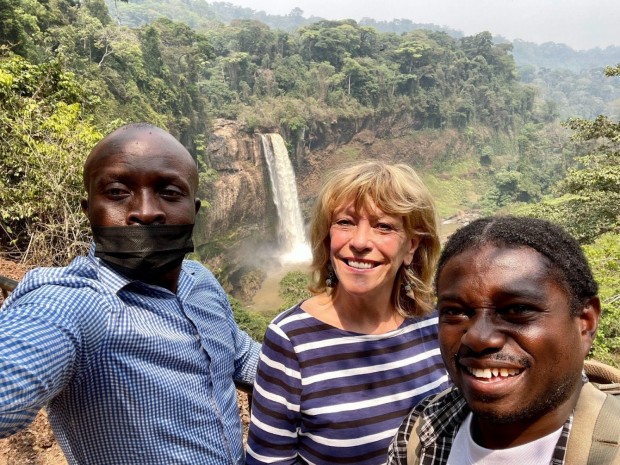
"[Here I am with] my guide Chemba in Cameroon. He met me at the Douala airport, which was not air-conditioned when I arrived on Feb. 21, 2022. He's a prince with a priceless smile. We were pen pals for a while, hoping to travel together again. One day, he wants to have a cacao plantation, which was his family's business, as well as his seasonal tourism business. When Chemba was recently in Central African Republic, he saw some teenage boys living in the street. He encouraged them to get educated, they were at a third-grade level, so he could find them jobs in Cameroon. Chemba has a huge heart. Chemba's English is [also] very fine. He likes American films, including flicks like A Few Good Men and A Time to Kill."

"I was blessed to have Christinne as my guide. We became sisters that day. She showed me many musical instruments used in Cameroon," Neely says. "Music was a way to commune with the gods. Saxophonist Manu Dibango, who died in 2020 from COVID, [was] from Cameroon. Michael Jackson purloined (in his song "Wanna Be Startin' Somethin'") part of Dibango's song 'Soul Makossa.' A settlement was reached. I was very interested in seeing the many photographs of the Cameroonian president Paul Biya and his wife Chantal, including one of Chantal with Michelle Obama in New York in October 2009."
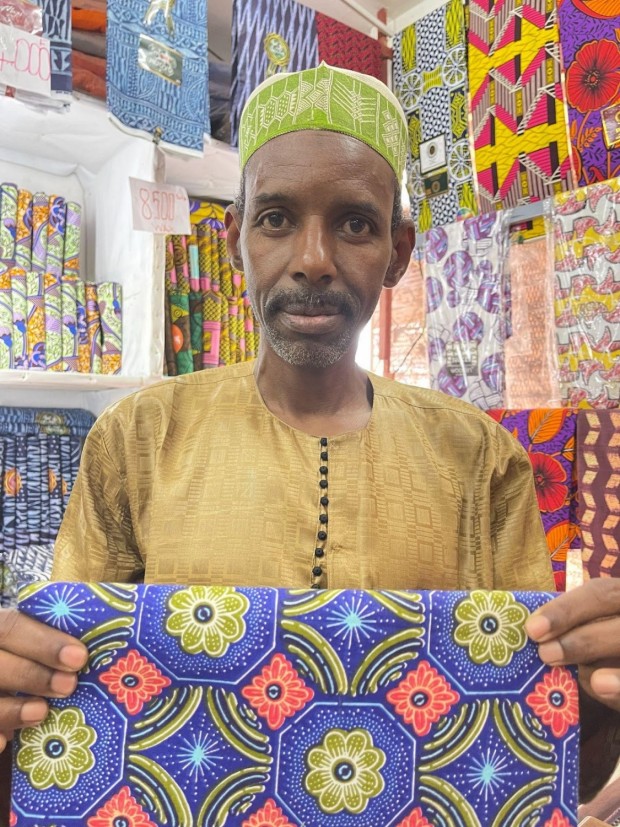

"In this bustling and colorful market I bought some beautiful fabric and then had it made into a dress that very day - all for $50," Neely says. "The market also served as a local barbershop."
Feb. 6, 2022: Central African Republic
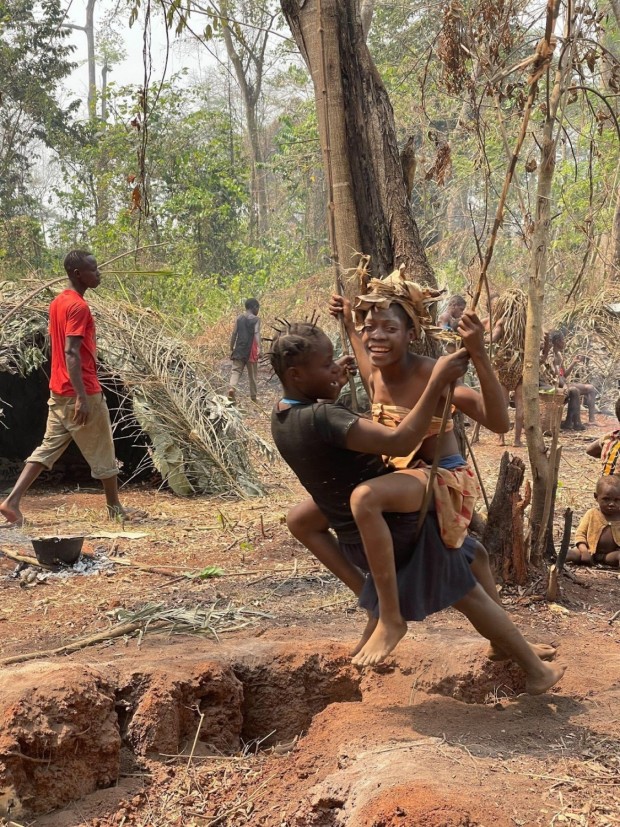
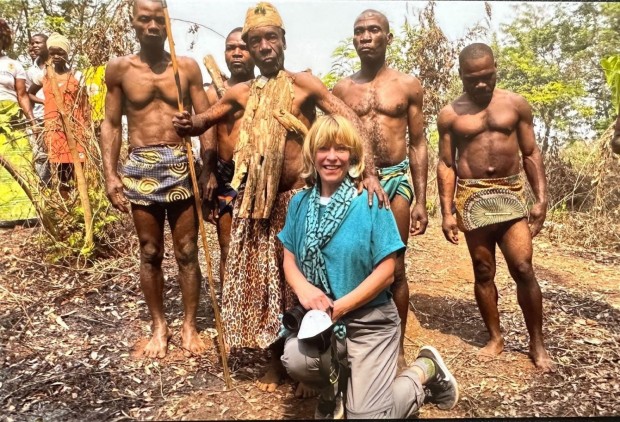
"[Here are some images from my time with the] Pygmy people in Central African Republic, which I visited on Feb. 6, 2022. The word 'pygmy' derives from [the] ancient Greek word referring to small size, used in Homer's Iliad to speak of mythical people of short stature. French explorers used the word 'pygmy' when they encountered relatively short-statured people in central Africa. When I use the term, I do so without any pejorative connotation. The people I visited were near the region of Lobaye. The chief greeted us and the villagers treated us to dance and song, and shared some of their hunting and gathering techniques with us. I loved the people's sense of fun and play. I danced with them too."
This article is copyrighted by Travelers Today, the travel news leader
* This is a contributed article and this content does not necessarily represent the views of travelerstoday.com



